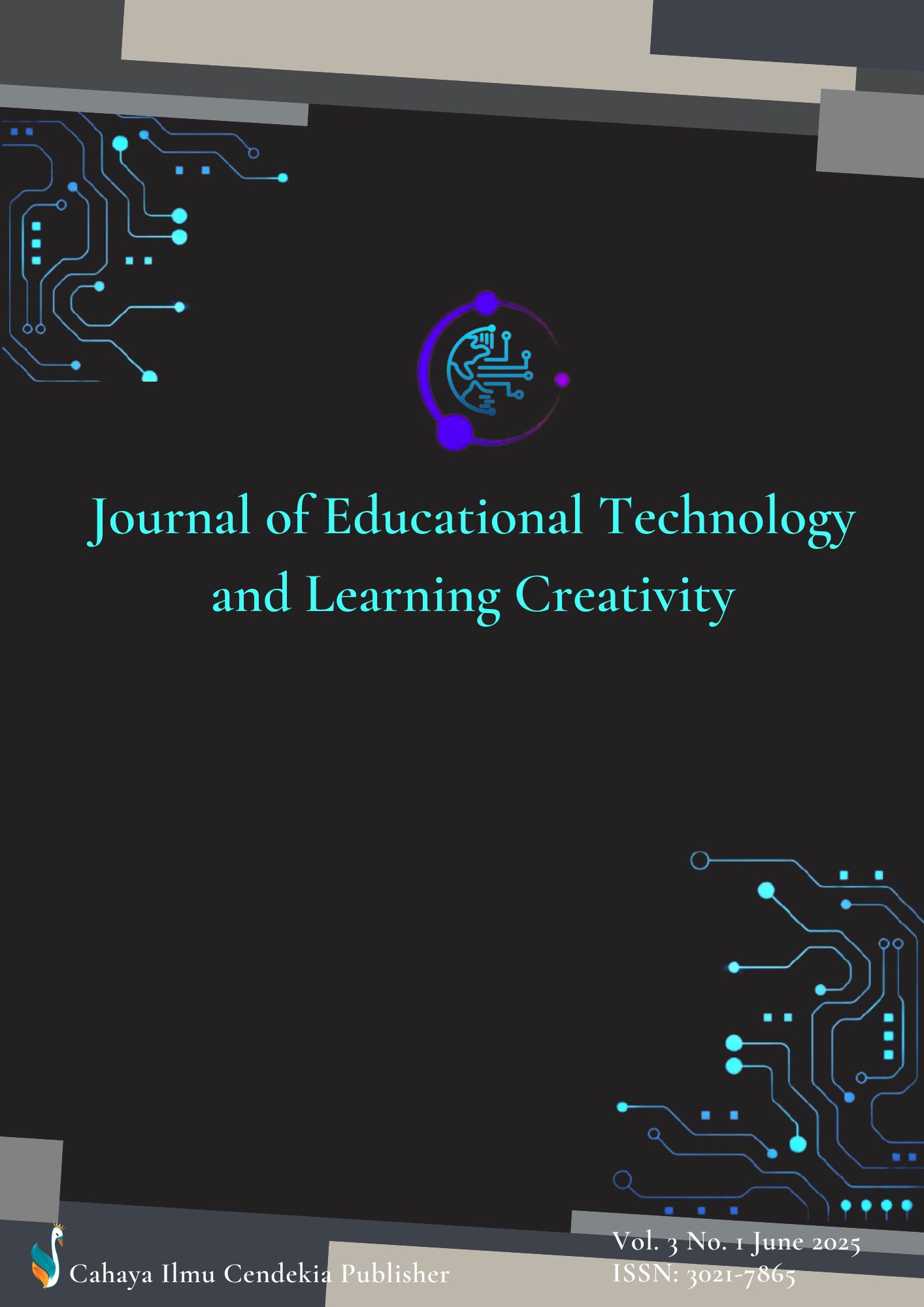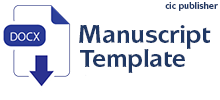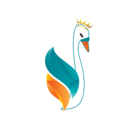Students' Evaluation of the Effectiveness of Open Access Journals in Accelerating Paper Completion
Abstract
Purpose of the study: The purpose of this study is to analyze students' perceptions in depth regarding the benefits of open access journals in the process of completing students' final assignments.
Methodology: This research method uses naturalistic qualitative to analyze students' perceptions of Open Access journals in completing their final assignments. Data were collected through in-depth interviews with 20 physics education students who use open access journals. This research instrument uses a semi-structured interview guide. Data analysis was carried out using thematic analysis.
Main Findings: Open Access Journals accelerate the completion of students' final assignments through free, fast, and quality access to scientific literature. Students feel that these journals enhance research independence, enrich students' understanding of the research topic, and provide a global perspective. However, challenges such as variation in journal quality, limited access to full articles, and language barriers still exist. However, students can overcome these by using alternative platforms and being more selective in choosing journals.
Novelty/Originality of this study: This study offers a new perspective on the contribution of Open Access journals in accelerating the completion of final assignments for students in developing countries, especially Indonesia, who face financial and information literacy constraints. This study highlights students' experiences in using Open Access journals, accessibility challenges, and solution strategies, providing applicable insights for the development of open access-based education policies.
References
K. D. Beiter, “Open Access ‘Unaccomplished’–Reforming Copyright or Reconceptualizing Science? Access to Scholarly Publications under a (Reinterpreted) Right to Science,” Nord. J. Hum. Rights, vol. 42, no. 3, pp. 281–321, 2024, doi: 10.1080/18918131.2024.2390277.
M. K. Merga, “Understanding ‘Predatory’ Journals and Implications for Guiding Student and Client Information Seeking,” J. Libr. Adm., vol. 64, no. 6, pp. 682–694, 2024, doi: 10.1080/01930826.2024.2371275.
A. Abalkina, “Prevalence of plagiarism in hijacked journals: A text similarity analysis,” Account. Res., vol. 00, no. 00, pp. 1–19, 2024, doi: 10.1080/08989621.2024.2387210.
M. Zukerfeld, S. Liaudat, M. S. Terlizzi, C. Monti, and C. Unzurrunzaga, “A specter is haunting science, the specter of piracy. A case study on the use of illegal routes of access to scientific literature by Argentinean researchers,” Tapuya Lat. Am. Sci. Technol. Soc., vol. 5, no. 1, 2022, doi: 10.1080/25729861.2022.2117491.
K. New, K. Fox, H. Church, and F. Moorman, “The development and evaluation of an online journal club: perspectives from student participants and practitioners,” Open Learn., vol. 00, no. 00, pp. 1–19, 2024, doi: 10.1080/02680513.2024.2349234.
A. Wessell and C. Thorpe, “Digital stewardship for River stewardship: creating the Richmond River open access repository,” Arch. Rec., vol. 45, no. 2, pp. 135–152, 2024, doi: 10.1080/23257962.2024.2344216.
J. T. Lusk, K. Jones, A. Ross, and V. Lecat, “Insight into Faculty Open Access Perceptions: A Quantitative Analysis among UAE Faculty,” New Rev. Acad. Librariansh., vol. 29, no. 3, pp. 219–243, 2023, doi: 10.1080/13614533.2022.2122853.
A. S. Bahammam, “Balancing Innovation and Integrity: The Role of AI in Research and Scientific Writing,” Nat. Sci. Sleep, vol. 15, pp. 1153–1156, 2023, doi: 10.2147/NSS.S455765.
N. Sumba Nacipucha, A. Sánchez-Bayón, J. Cueva Estrada, and A. Valencia-Arias, “Social networks as a strategy to improve the visibility of scientific journals,” Cogent Soc. Sci., vol. 10, no. 1, p., 2024, doi: 10.1080/23311886.2024.2306715.
H. Ibrahim, S. A. Elhag, S. M. Elnour, S. Abdel-Razig, T. Harhara, and S. C. Nair, “medical resident awareness of predatory journal practices in an international medical education system,” Med. Educ. Online, vol. 27, no. 1, 2022, doi: 10.1080/10872981.2022.2139169.
M. Nazim and A. Ali, “An investigation of open access availability of library and information science research,” DESIDOC J. Libr. Inf. Technol., vol. 43, no. 2, pp. 101–111, 2023, doi: 10.14429/djlit.43.2.18580.
T. Williams et al., “Benefits realisation: case studies in public major project delivery with recommendations for practice,” Prod. Plan. Control, vol. 0, no. 0, pp. 1–21, 2023, doi: 10.1080/09537287.2023.2256287.
M. Sahakian et al., “Reflexivity through practice-informed student journals: how ‘sustainable wellbeing’ relates to teleoaffectivities,” Sustain. Sci. Pract. Policy, vol. 18, no. 1, pp. 247–262, 2022, doi: 10.1080/15487733.2022.2043078.
S. LeMire, “Adult learning and open educational resources,” Open Learn., vol. 00, no. 00, pp. 1–14, 2024, doi: 10.1080/02680513.2024.2311768.
D. Bryson, “Using open access publications to support your professional development,” J. Vis. Commun. Med., vol. 45, no. 4, pp. 272–274, 2022, doi: 10.1080/17453054.2022.2111299.
K. L. Buchanan and S. Pruett-Jones, “Ornithology and open access publishing,” Emu, vol. 123, no. 4, pp. 265–267, 2023, doi: 10.1080/01584197.2023.2270232.
C. Bulock, “Public Access to Federally Funded Research,” Ser. Rev., vol. 49, no. 1–2, pp. 51–53, 2023, doi: 10.1080/00987913.2023.2174399.
M. Gallagher and J. Lamb, “Open education in closed-loop systems: enabling closures and open loops,” Distance Educ., vol. 44, no. 4, pp. 620–636, 2023, doi: 10.1080/01587919.2023.2267475.
M. C. Schlembach and W. H. Mischo, “Authorship, citation, and publication characteristics across 130 years of the journal of the american chemical society,” Sci. Technol. Libr., vol. 42, no. 4, pp. 456–479, 2023, doi: 10.1080/0194262X.2023.2238013.
K. Kodua-Ntim, “Author self-archiving in open access institutional repositories for awareness creation in universities,” Cogent Soc. Sci., vol. 10, no. 1, p., 2024, doi: 10.1080/23311886.2024.2364385.
L. Juhász, “Assessing publication trends in selected GIScience journals,” Int. J. Geogr. Inf. Sci., vol. 38, no. 8, pp. 1443–1467, 2024, doi: 10.1080/13658816.2024.2347306.
J. Baines, “Establishing special collections literacy for undergraduate students: an investigation into benefits and barriers of access,” Arch. Rec., vol. 44, no. 1, pp. 8–35, 2023, doi: 10.1080/23257962.2022.2149481.
T. Schlak and A. S. Macklin, “A Transformative Agreement Community of Practice: Collaboratively-Produced Insights into the Current Open Access Environment,” New Rev. Acad. Librariansh., vol. 0, no. 0, pp. 1–29, 2024, doi: 10.1080/13614533.2024.2381527.
M. P. Simanjuntak, J. Hutahaean, N. Marpaung, and D. Ramadhani, “Effectiveness of problem-based learning combined with computer simulation on students’ problem-solving and creative thinking skills,” Int. J. Instr., vol. 14, no. 3, pp. 519–534, 2021, doi: 10.29333/iji.2021.14330a.
J. Mahony, “Towards an All-Ireland Diamond Open Access Publishing Platform: The PublishOA.ie Project—2022–2024,” Publications, vol. 12, no. 3, p. 19, 2024, doi: 10.3390/publications12030019.
P. Croll, “The nature of contemporary studies of education: an analysis of articles published in leading journals,” Br. J. Educ. Stud., vol. 71, no. 5, pp. 537–547, 2023, doi: 10.1080/00071005.2023.2231523.
H. Guo, “IJDE: a new step forward–the move to an open access journal,” Int. J. Digit. Earth, vol. 15, no. 1, p. 1, 2022, doi: 10.1080/17538947.2021.2025010.
J. C. Marcillo-Delgado, A. Alvarez-Garcia, and A. García-Carrillo, “Bibliometric mapping of the trends and contributions of scientific publications to risk and crisis communication regarding South America,” Sustain. Environ., vol. 9, no. 1, 2023, doi: 10.1080/27658511.2023.2254145.
J. M. Bonnett and A. Siganos, “Referee quality and article citations: a case study of a finance journal,” Stud. High. Educ., pp. 1–13, 2024, doi: 10.1080/03075079.2024.2406389.
D. Mwambari, F. A. Ali, and C. Barak, “The impact of open access on knowledge production, consumption and dissemination in Kenya’s higher education system,” Third World Q., vol. 43, no. 6, pp. 1408–1424, 2022, doi: 10.1080/01436597.2022.2056010.
E. Saito, P. L. Y. Kwok, and R. O’Donovan, “Conceptual typologies of learning communities for master’s course students using a publications exemplar: a comparative institutional analysis,” Interact. Learn. Environ., 2023, doi: 10.1080/10494820.2023.2194335.
J. Holford, M. Milana, S. Webb, R. Waller, S. Hodge, and E. Knight, “Shaping the field of lifelong education through three critical debates in the International Journal of Lifelong Education,” Int. J. Lifelong Educ., vol. 41, no. 6, pp. 549–571, 2022, doi: 10.1080/02601370.2022.2160020.
M. van de Laar, R. E. West, P. Cosma, D. Katwal, and C. Mancigotti, “The value of educational microcredentials in open access online education: a doctoral education case,” Open Learn., vol. 39, no. 4, pp. 373–386, 2022, doi: 10.1080/02680513.2022.2072721.
W. A. Shah, R. Ali, and A. Lashari, “De-naturalizing the ‘predatory’: A study of ‘bogus’ publications at public sector universities in Pakistan,” Account. Res., vol. 31, no. 2, pp. 80–99, 2024, doi: 10.1080/08989621.2022.2106424.
S. Ali, N. Hartini, and N. H. Yoenanto, “Exploring the genetic underpinnings of bullying : a contemporary analysis of scholarly investigations,” Society, vol. 12, no. 2, pp. 614–630, 2024, doi: 10.33019/society.v12i2.673.
I. Korstjens and A. Moser, “Series: Practical guidance to qualitative research. Part 6: Longitudinal qualitative and mixed-methods approaches for longitudinal and complex health themes in primary care research,” Eur. J. Gen. Pract., vol. 28, no. 1, pp. 118–124, 2022, doi: 10.1080/13814788.2022.2053106.
C. Wiesner, “Doing qualitative and interpretative research: reflecting principles and principled challenges,” Polit. Res. Exch., vol. 4, no. 1, 2022, doi: 10.1080/2474736X.2022.2127372.
M. Herrera-Abián et al., “The caregiver’s perspective on end-of-life inpatient palliative care: a qualitative study,” Ann. Med., vol. 55, no. 2, p., 2023, doi: 10.1080/07853890.2023.2260400.
S. J. Pryde, O. Williams, M. P. O’Hare, C. Murdock, and K. Pedlow, “Exploring access to community neurorehabilitation for people with progressive neurological conditions: a qualitative study,” Disabil. Rehabil., vol. 0, no. 0, pp. 1–14, 2024, doi: 10.1080/09638288.2024.2338198.
E. C. J. Roefs, I. E. Oosterheert, Y. A. M. Leeman, W. M. van der Veld, and P. C. Meijer, “Investigating ‘Presence in teaching’: explicating the transition from qualitative studies to a survey instrument,” Int. J. Res. Method Educ., vol. 47, no. 3, pp. 260–276, 2024, doi: 10.1080/1743727X.2023.2281318.
C. G. Anderson, R. W. McQuaid, and A. M. Wood, “The effect of journal metrics on academic resume assessment,” Stud. High. Educ., vol. 47, no. 11, pp. 2310–2322, 2022, doi: 10.1080/03075079.2022.2061446.
A. Carruthers, H. Chung, R. Crawford, J. H. Y. Lee, and J. Lee, “Author language and communication preferences, and familiarity with global publication guidelines, for English-language industry-sponsored publications in Asia-Pacific: insights from a cross-sectional survey,” Curr. Med. Res. Opin., vol. 40, no. 10, pp. 1809–1819, 2024, doi: 10.1080/03007995.2024.2396532.
D. E. Irawan, J. Abraham, R. A. Zein, I. A. Ridlo, and E. K. Aribowo, “Open access in Indonesia,” Dev. Change, vol. 52, no. 3, pp. 651–660, 2021, doi: 10.1111/dech.12637.
B. B. Wiyono and H. H. Wu, “Increased number of scopus articles from Indonesia from 1945 to 2020, an analysis of international collaboration, and a comparison with other ASEAN Countries from 2016 to 2020,” Adm. Sci., vol. 12, no. 3, 2022, doi: 10.3390/admsci12030099.
M. S. A. Hakami, “Barriers to conducting and publishing scientific research among nursing faculty members in Saudi Arabia,” J. Multidiscip. Healthc., vol. 16, pp. 2733–2743, 2023, doi: 10.2147/JMDH.S429478.
Copyright (c) 2025 Nabila Anugradia, Tugsina Kruehong, Jaime Lara Alvarez

This work is licensed under a Creative Commons Attribution 4.0 International License.
Authors who publish with this journal agree to the following terms:
- Authors retain copyright and acknowledge that the Journal of Educational Technology and Learning Creativity is the first publisher licensed under a Creative Commons Attribution 4.0 International License.
- Authors are able to enter into separate, additional contractual arrangements for the non-exclusive distribution of the journal's published version of the work (e.g., post it to an institutional repository or publish it in a book), with an acknowledgment of its initial publication in this journal.
- Authors are permitted and encouraged to post their work online (e.g., in institutional repositories or on their website) prior to and during the submission process, as it can lead to productive exchanges and earlier and greater citation of published work.


.png)


.png)
.png)
.png)












